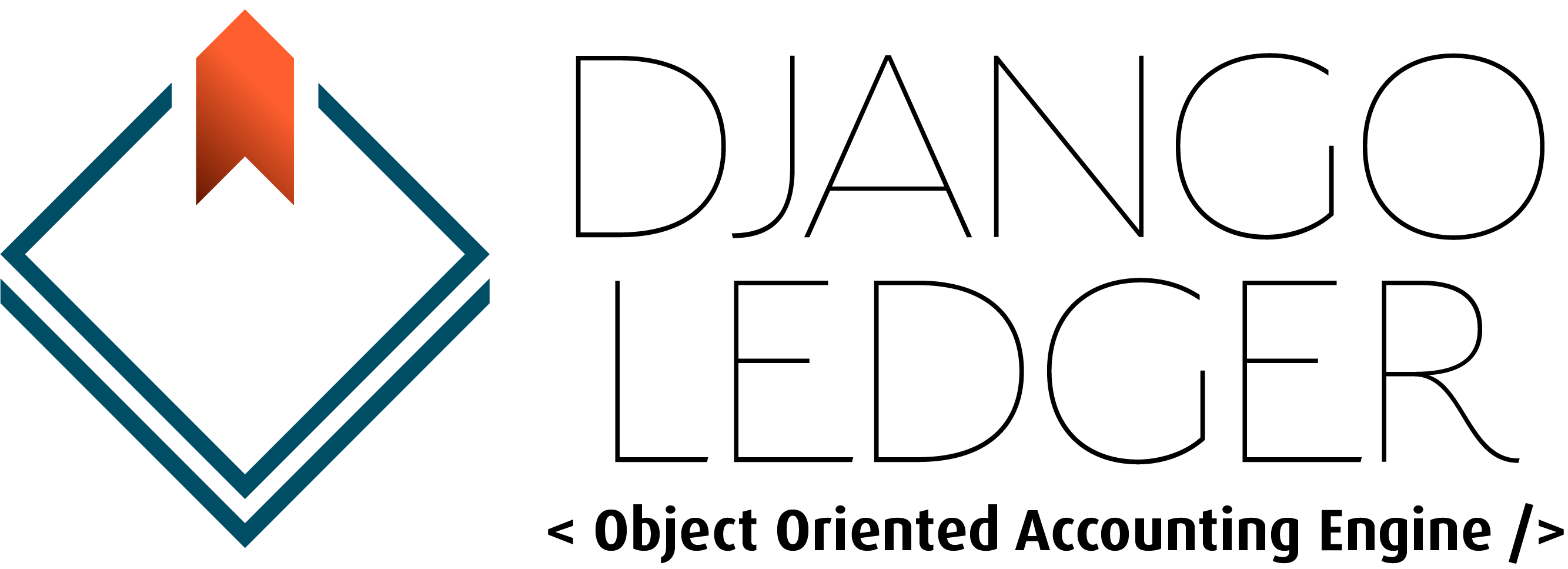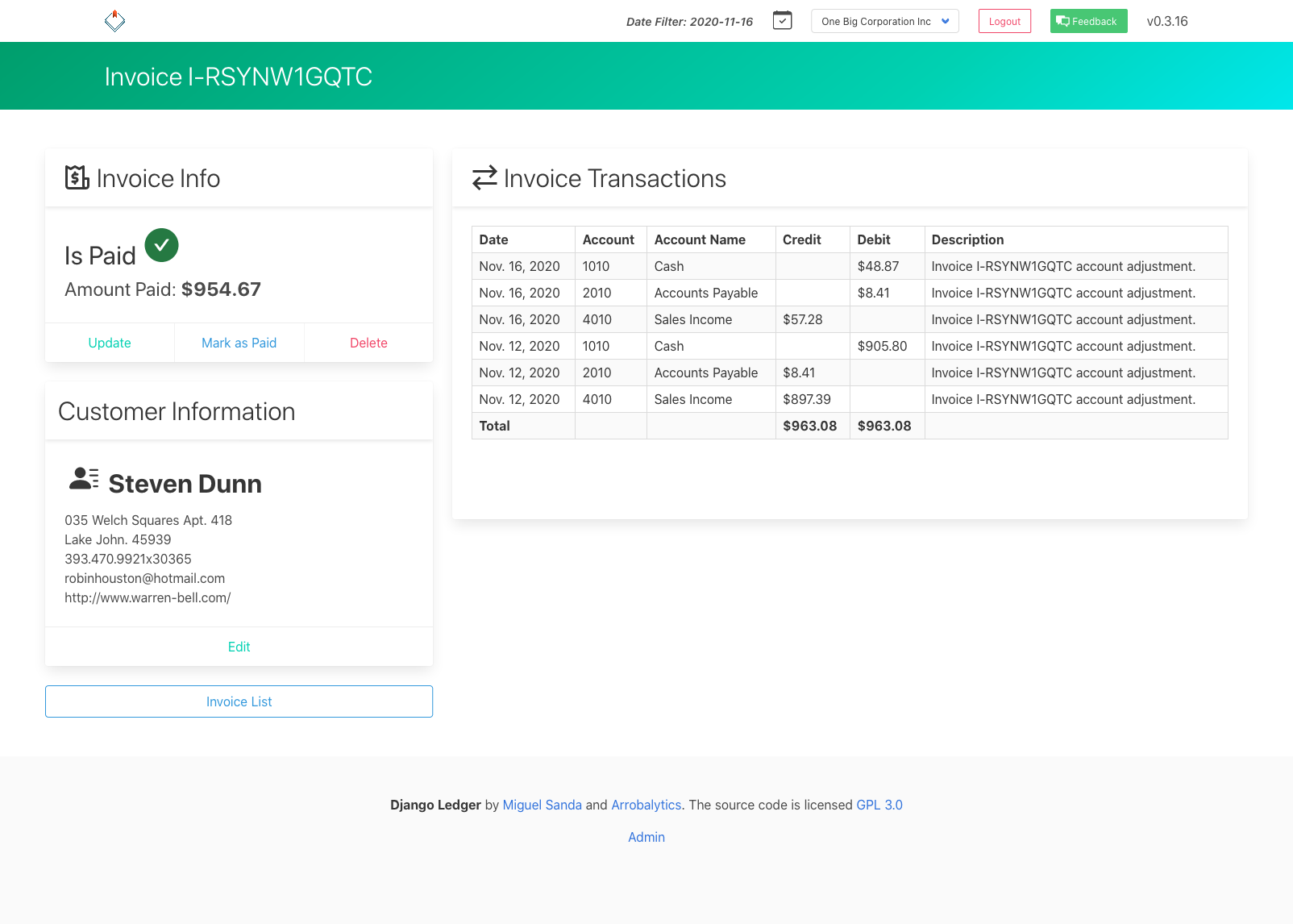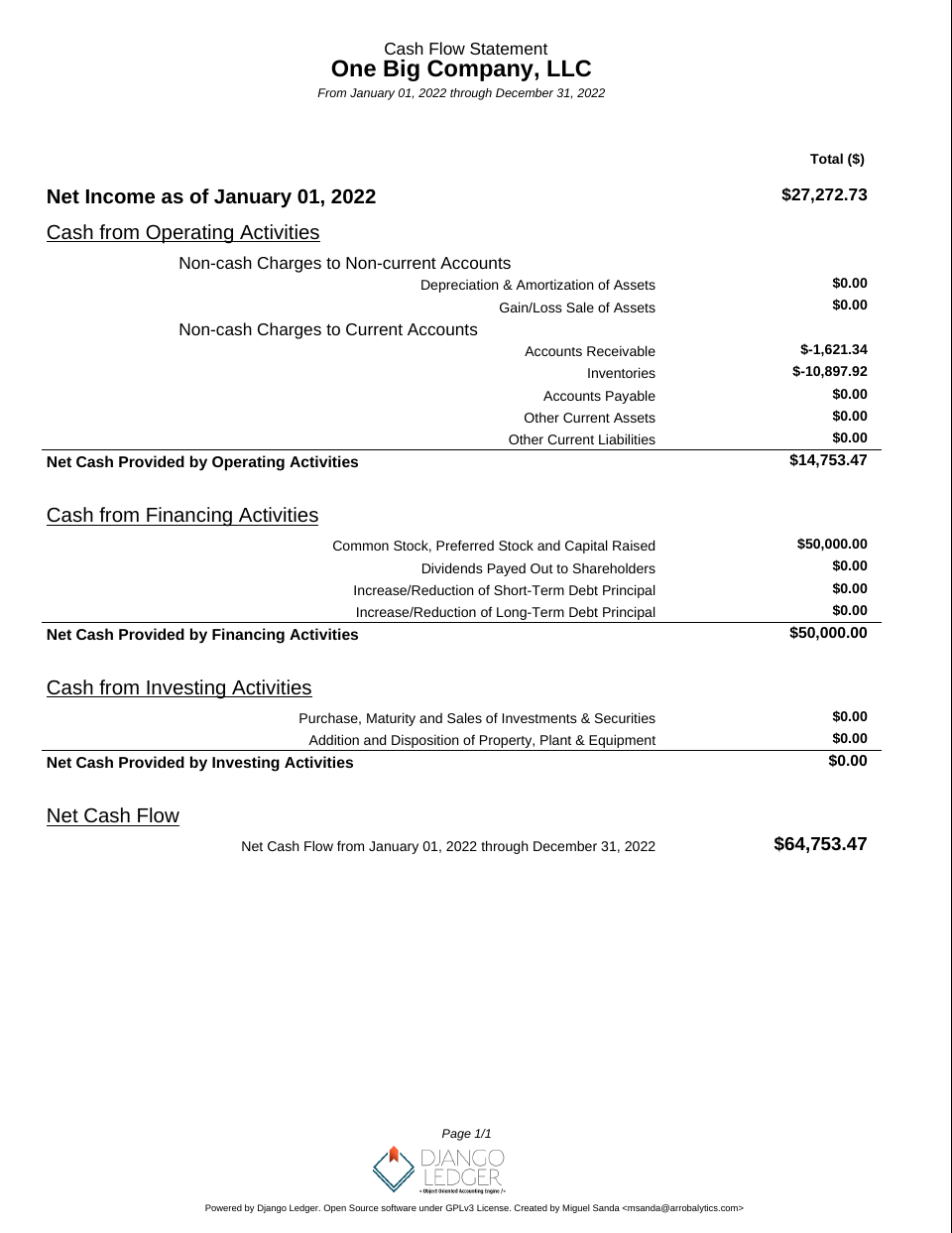Bookkeeping & Financial analysis backend for Django. Balance Sheet, Income Statements, Chart of Accounts, Entities
Reason this release was yanked:
bug
Project description
An Accounting, Bookkeeping & Financial Analysis Engine for the Django Framework.
Django Ledger is a double entry accounting system based on the Django Web Framework, which aims to power financially driven applications by removing the complexity of the accounting domain into a simple, high-level API. Prior experience with Django is required to more effectively use this software.
Django Ledger was created and is currently maintained and developed by lead developer Miguel Sanda. If you want to contribute please consider joining our new discord channel here.
Join our Discord Channel Here
The software is still in early stages of development. For more information, please check the Roadmap.
How long until all features are implemented?
Finance and Accounting is a complicated subject. Django Ledger is different from other Django projects as it aims to provide a developer-friendly accounting engine while providing a reliable and extensible API to power financially driven applications. This project in particular, not only requires Python AND Django programming experience, but also finance and accounting experience. So, that's the long way of saying, we need your help! Join our Discord Channel here to learn more.
This project can greatly benefit from contributions towards Documentation and Unit Tests. This is the best way to get started twith this project if you are not familiar with the models.
Documentation
Access the latest documentation and QuickStart guide here. Also, you may download the QuickStart Jupyter Notebook here.
Django Ledger supports:
- Double entry accounting.
- Hierarchical Chart of Accounts.
- Financial Statements (Income Statement, Balance Sheet & Cash Flow Statement).
- Purchase Orders, Sales Orders (Estimates), Bills and Invoices.
- Automatic financial ratio & insight calculations.
- High Level Entity API.
- Multi tenancy (multiple companies/users/clients).
- Self-contained Ledgers, Journal Entries & Transactions.
- Basic OFX & QFX file import.
- Bills & Invoices with optional cash/accrual functionality.
- Basic navigational templates.
- Entity administration & entity manager support.
- Items, lists & inventory management.
- Unit of Measures.
- Bank Accounts.
Roadmap to Version 1.0.
Version 0.4 completed
- 0.4.0: Items, resources and & lists for bills & invoices itemization:
- 0.4.0: Enhance and optimize Django Ledger the random data generation functionality to properly populate relevant random data for testing.
- 0.4.1: Entity internal organizations, department, branches, etc.
- 0.4.2: Custom Accounting Periods.
- 0.4.3: Purchase Order Model implementation.
- Bugfixes & UI/UX Enhancements.
Version 0.5
More details available in the Django Ledger v0.5 Page .
- 0.5: Testing framework implementation that will include:
- Unit tests using the Built-in Django unit test modules.
- Behavioral Driven Testing using behave library.
- Need help!!!! If you want to contribute PLEASE ADD UNIT TESTS!!!
- Start creating basic package documentation via Sphinx
- Document code and functions within code base.
- Generate HTML documentation.
- Work with Accountants, Subject Experts and Developers to define an initial list of Unit Tests to validate output _ _( help needed!)__.
- Update package and code documentation.
- Bugfixes & UI/UX Enhancements.
0.5.0: Inventory tracking.- Average Cost.
0.5.1: Customer estimates & contract tracking.- Link Estimate/PO/Bill/Invoice workflow.
- Journal Entry activity determination & validation (for cash flow).
0.5.2: Cash flow statement.- Human Readable Journal Entry document numbers.
- Hierarchical Account Model Management.
- Generate all Django Ledger Model documentation.
0.5.3: High Level EntityModel API.- 0.5.4: Balance Sheet Statement, Income Statement & Cash Flow Statement API & PDF report export.
- 0.5.5: Closing entries and snapshots.
- 0.5.6: Chart of Accounts Import.
- 0.5.7: Trial Balance Import.
- 0.5.8: GraphQL API.
Version 0.6
- IO Digest Context Manager
- Credit Line Models.
- Time tracking.
- Transaction tagging.
- Update package and code documentation.
- Bugfixes & UI/UX Enhancements.
Version 0.7
- Currency Models implementation as a way to define EntityModel default currency.
- Produce financial statements in different currencies.
- Update package and code documentation.
- Bugfixes & UI/UX Enhancements.
Version 0.8
- User roles and permissions on views to support read/write permissions for assigned managers to entities.
- User preferences and settings & account creation views.
- Update package and code documentation.
Version 0.9
- Enable Hierarchical Entity structures via TreeBeard.
- Consolidated financial statements.
- InterCompany transactions.
- Update package and code documentation.
Version 1.0
- Complete Internationalization of all user-related fields.
*** Roadmap subject to change based on user feedback and backlog priorities.
Want to contribute?
This project is actively looking for contributors. Any financial and/or accounting experience is a big plus. If you have prior accounting experience and want to contribute, don't hesitate to contact me. See contribution guidelines.
Contrib Packages
- GraphQL API - See details here.
Installation
Django Ledger is a Django application. If you haven't, you need a working knowledge of Django and a working Django Project before you can use Django Ledger. A good place to start is here. Make sure you refer to the django version you are using. A quick way to start a new django project is to run the following command:
- Install Python Pipenv:
pip install pipenv
- Go to your desired development folder and run:
mkdir django-ledger-project && cd django-ledger-project
- Install Django on you virtual environment.
pipenv install django
- Install Django Ledger
pipenv install django-ledger --categories graphql,pdf
- Activate your new virtual environment:
pipenv shell
- Create a new django project.
django-admin startproject django-ledger-project
- Perform database migrations:
python manage.py migrate
- Add Django SuperUser and follow the prompts.
python manage.py createsuperuser
- Add django_ledger to INSTALLED_APPS in you new Django Project.
INSTALLED_APPS = [
...,
'django_ledger',
...,
]
- Add URLs to your project's urls.py:
from django.urls import include, path
urlpatterns = [
...,
path('ledger/', include('django_ledger.urls', namespace='django_ledger')),
...,
]
- Run your project:
python manage.py runserver
- Navigate to Django Ledger root view assigned in your project urlpatterns setting.
- Use your user credentials.
How To Set Up Django Ledger for Development
Django Ledger comes with a basic development environment already configured under dev_env/ folder not to be used for production environments. If you want to contribute to the project perform the following steps:
- Navigate to your projects directory.
- Clone the repo from github and CD into project.
git clone https://github.com/arrobalytics/django-ledger.git && cd django-ledger
- Install PipEnv, if not already installed:
pip install -U pipenv
- Create virtual environment.
pipenv install
If using a specific version of Python you may specify the path.
pipenv install --python PATH_TO_INTERPRETER
- Activate environment.
pipenv shell
- Apply migrations.
python manage.py migrate
- Create a Development Django user.
python manage.py createsuperuser
- Run development server.
python manage.py runserver
Run Test Suite
After setting up your development environment you may run tests.
python manage.py test django_ledger
Screenshots

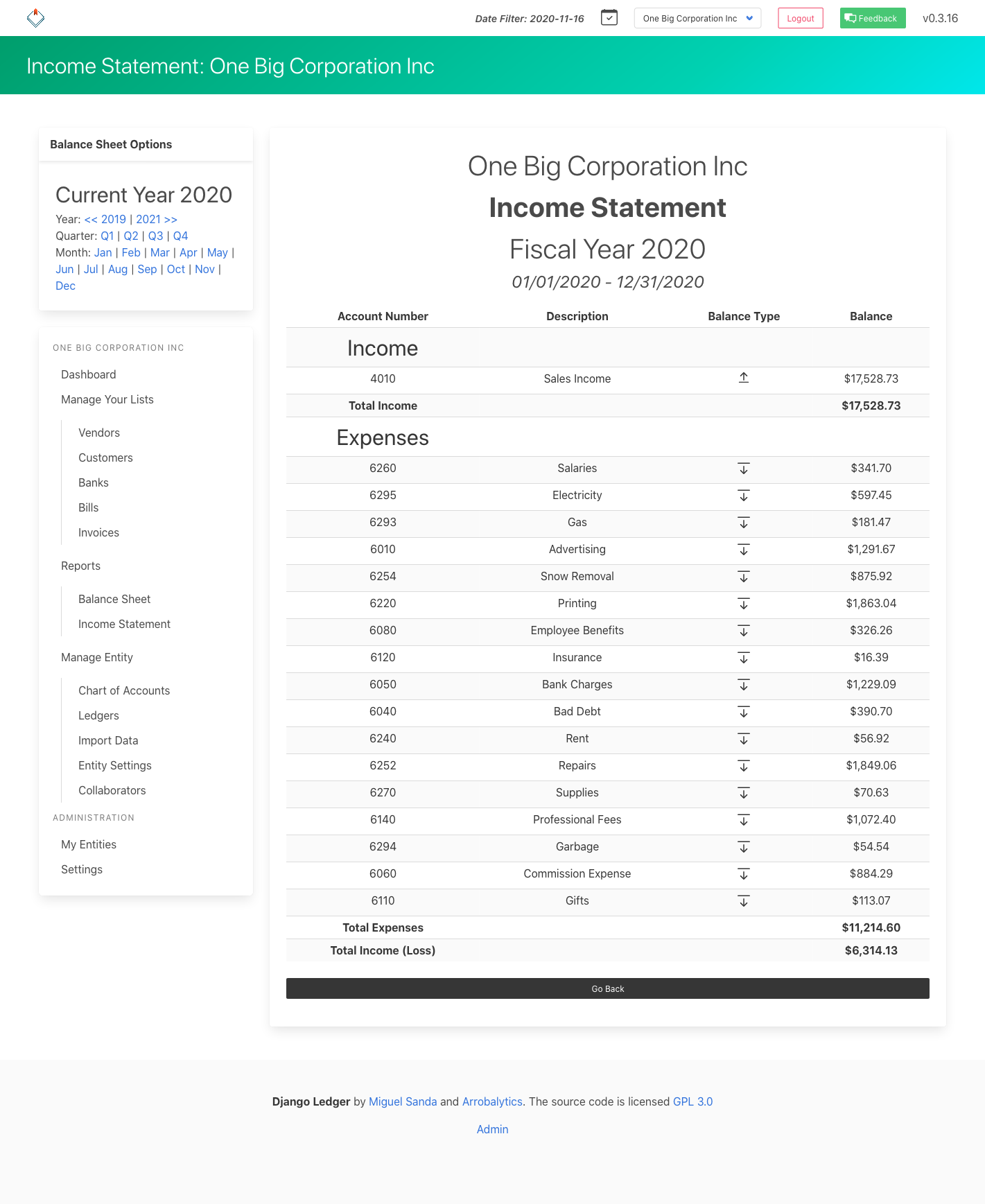
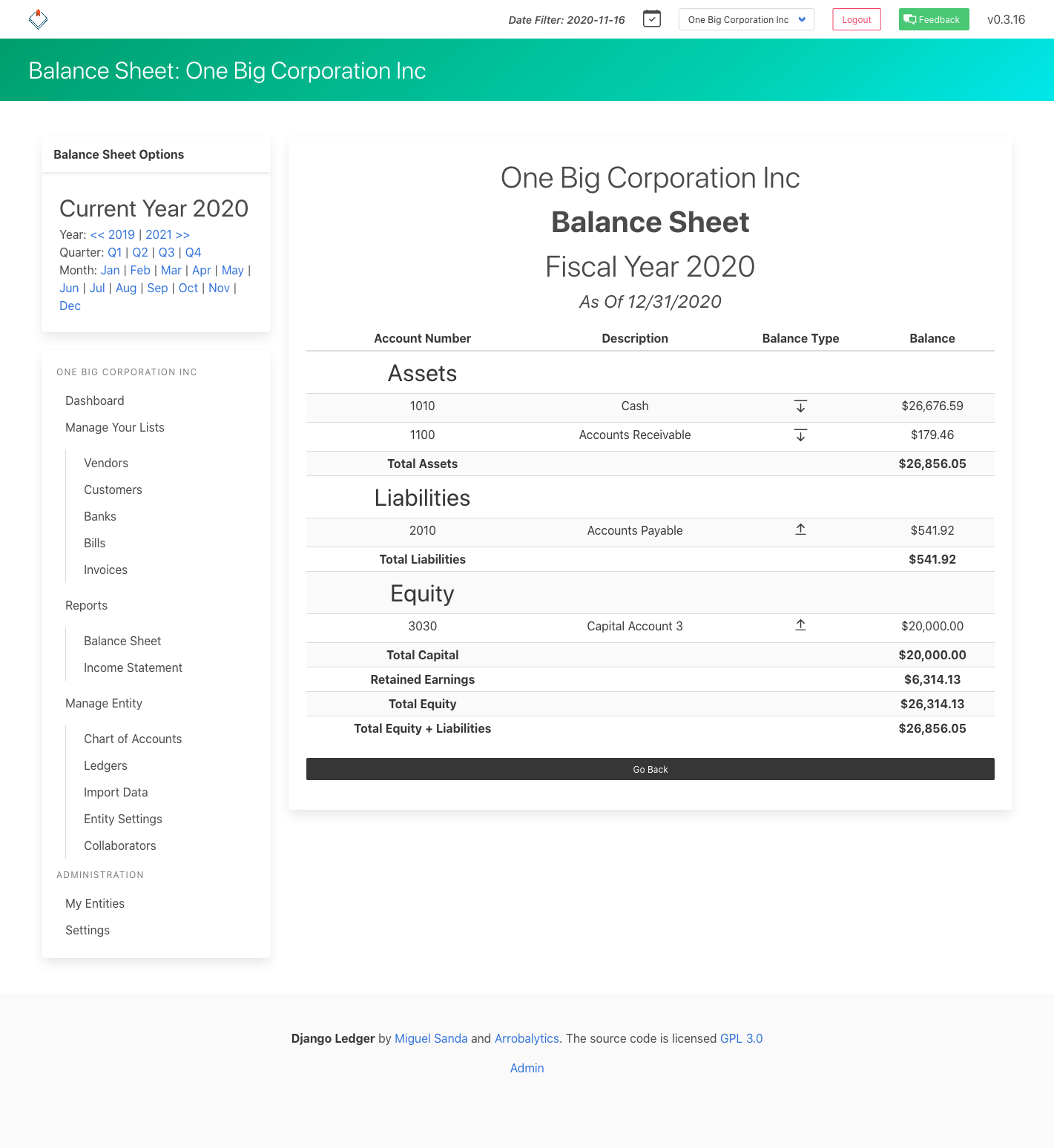
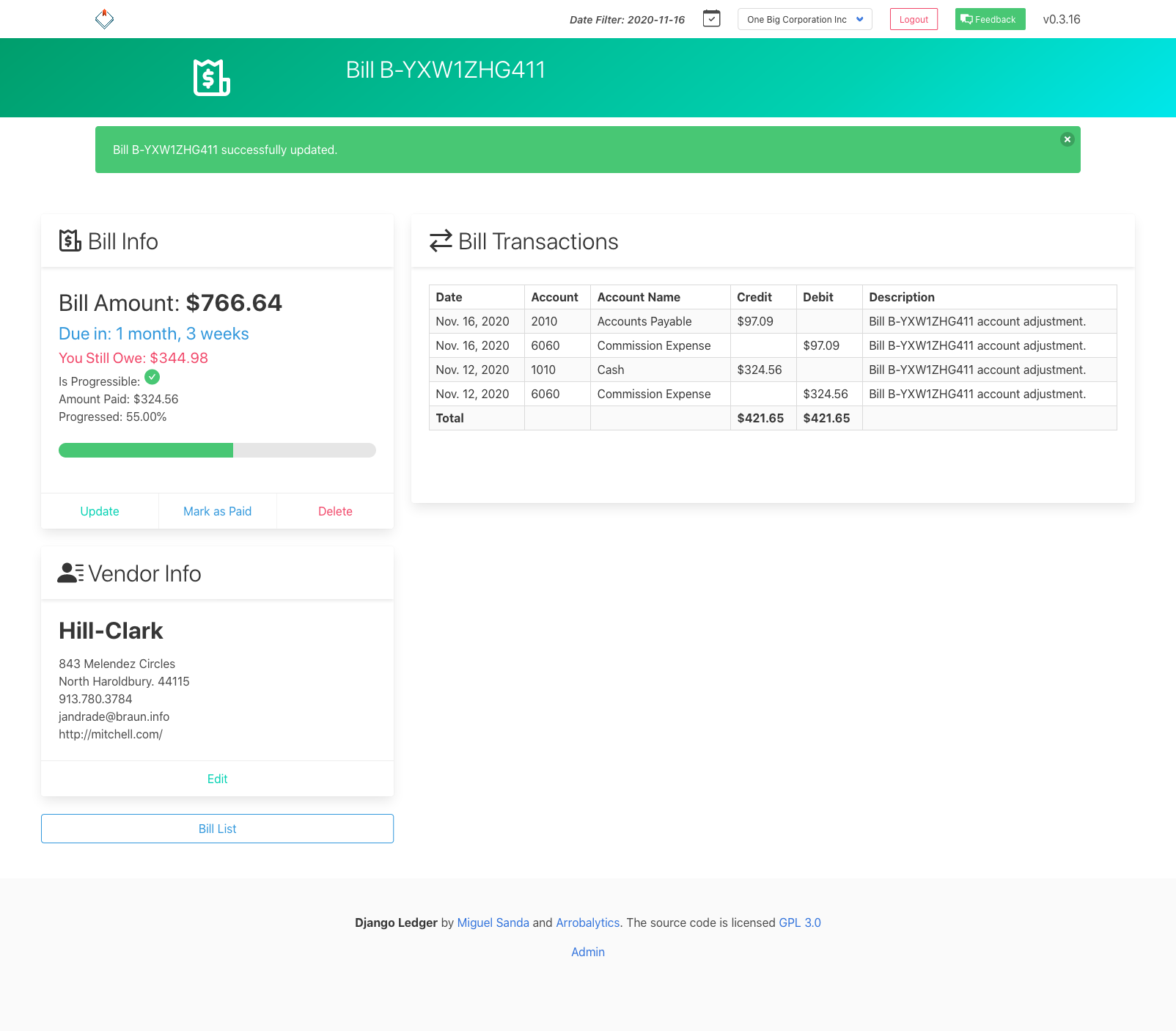
Financial Statements Screenshots
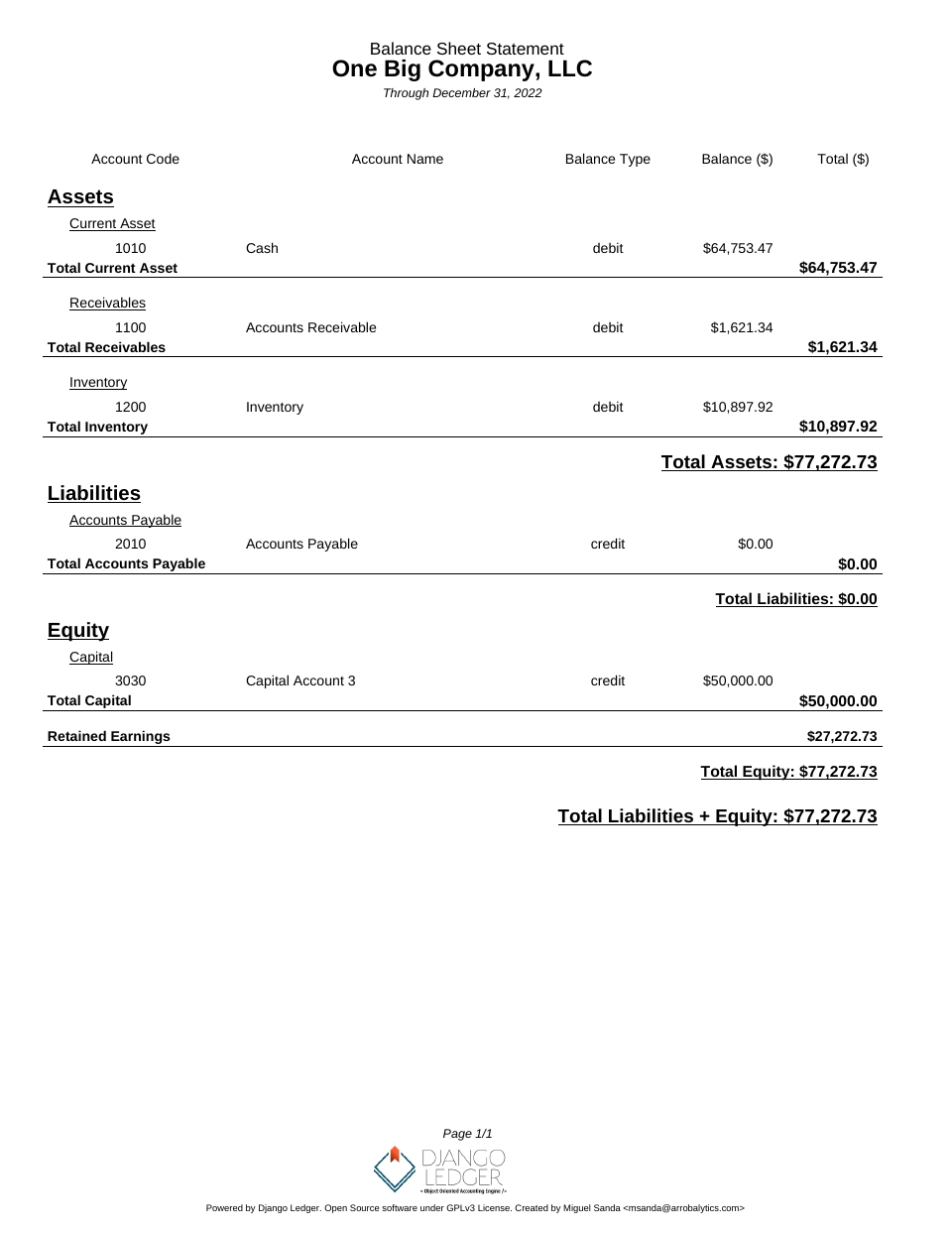
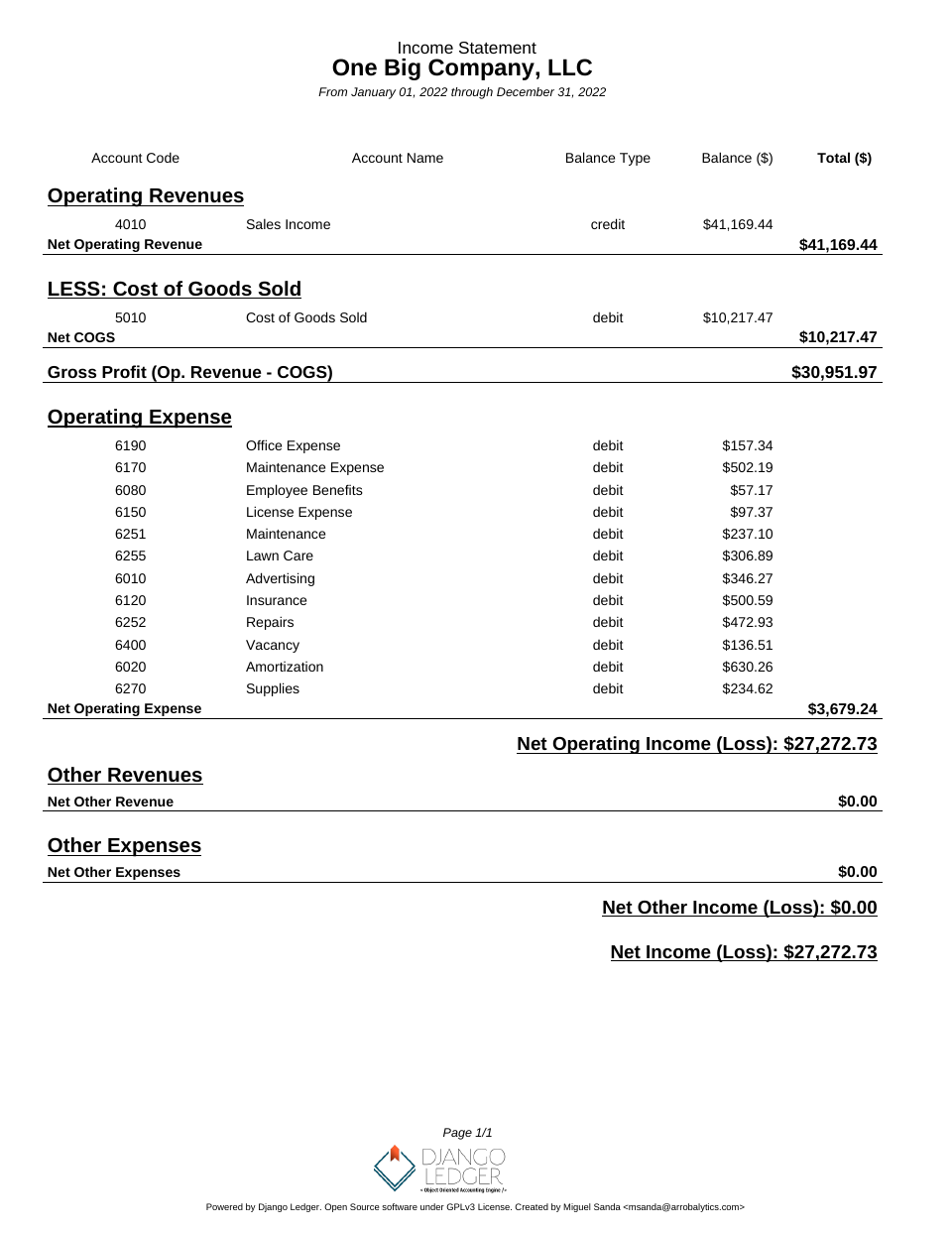
Project details
Release history Release notifications | RSS feed
Download files
Download the file for your platform. If you're not sure which to choose, learn more about installing packages.
Source Distributions
Built Distribution
Hashes for django_ledger-0.5.4.0-py3-none-any.whl
| Algorithm | Hash digest | |
|---|---|---|
| SHA256 | f31d80d273685383dc326a9b449782003e1b988e519c47c552e3e0f963636e77 |
|
| MD5 | 01f72b6059dc69c8f8b7abd9e57ef194 |
|
| BLAKE2b-256 | 94f2ff82730899f53b49f3bcb5ebaa3320e7e1d2a9717a23286b78a2e8ba1499 |


